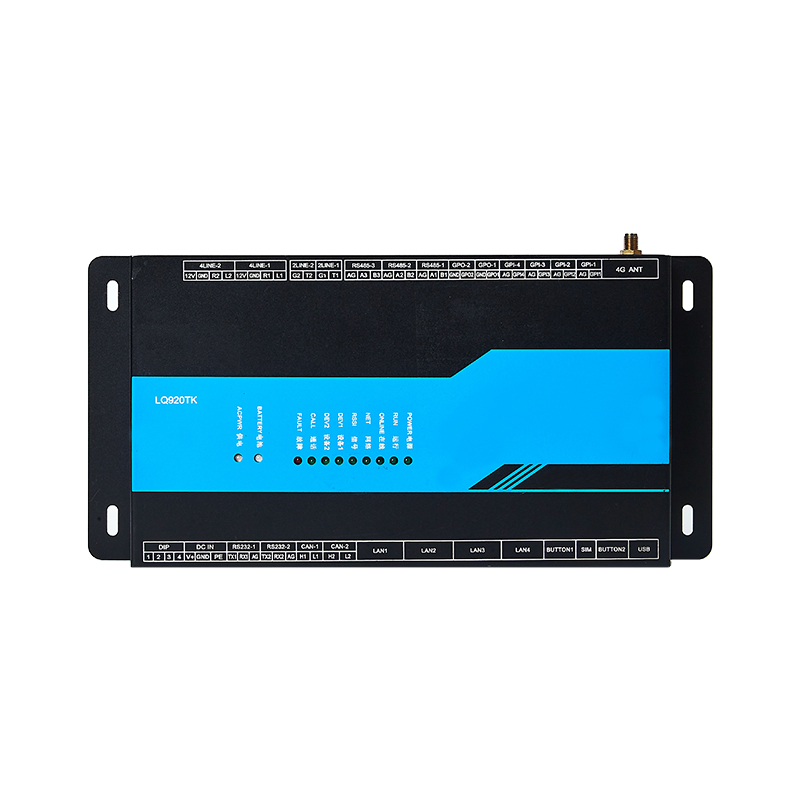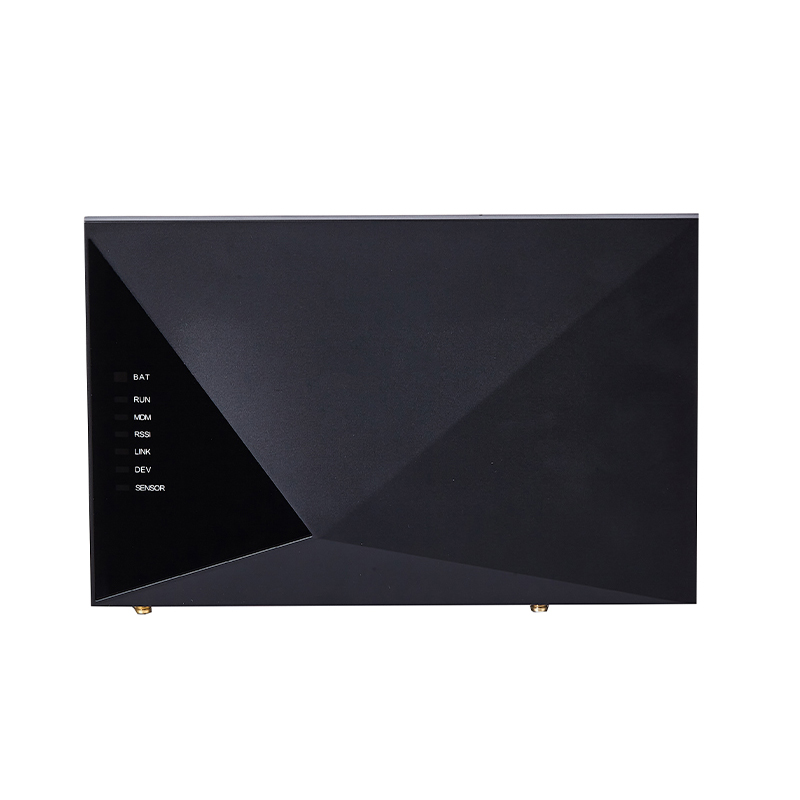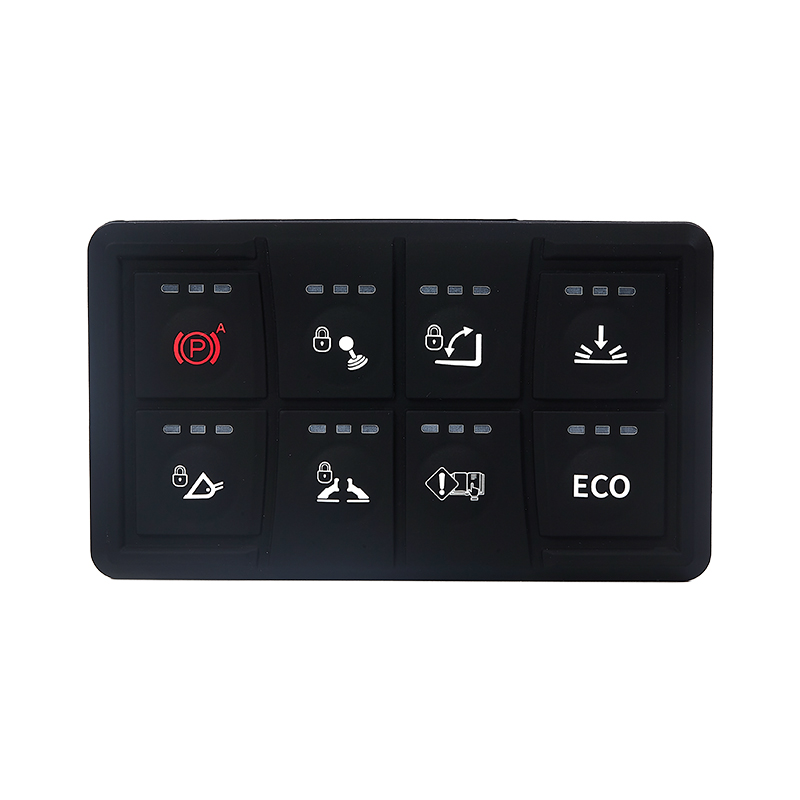How can an IoT gateway coordinator achieve low power consumption and long-term stable operation?
Release Time : 2025-10-15
In wide-area deployments of IoT systems, the gateway coordinator often plays a key role in connecting the perception and network layers. It must continuously receive data from end nodes such as sensors, actuators, and monitoring devices, and process, forward, or make local decisions. However, in many practical application scenarios, such as agricultural environmental monitoring, field facility management, underground pipeline monitoring, and smart device deployment in remote areas, the gateway coordinator often faces the challenge of limited power supply and reliance on batteries or solar power. In this context, low power design is no longer a tangible optimization but a key factor in the long-term stability of the system. An excellent IoT gateway coordinator must minimize energy consumption while ensuring communication and data processing performance, enabling reliable, long-term, unattended operation.
The achievement of low power design stems primarily from in-depth optimization of the hardware architecture. The gateway's core processor does not simply pursue high performance, but instead uses an embedded chip with dynamic frequency modulation and multiple sleep modes. During periods of data inactivity, the system automatically enters a deep sleep state, leaving only the real-time clock and wake-up interrupt modules operational, reducing overall power consumption to extremely low levels. When a sensor trigger event or a scheduled task arrives, the processor quickly wakes up, completes data collection and transmission, and then enters sleep again. This "on-demand" operation avoids the wasteful, high-power operation of traditional devices, significantly extending energy lifecycles.
The gateway coordinator also prioritizes energy efficiency in its communication module design. It supports multiple wireless protocols, but not all modules are active simultaneously. The system intelligently activates the appropriate wireless interface based on the connected device type and communication frequency, while remaining modules remain disabled or in standby mode. For example, in scenarios where Zigbee or LoRa is the primary communication method, Wi-Fi or cellular networks are only activated briefly when data is uploaded to the cloud, remaining inactive to conserve power. Furthermore, the communication protocols themselves employ low-power mechanisms, such as data packetization, reduced handshakes, and extended polling cycles, to reduce the frequency and duration of wireless signal transmissions, thereby reducing energy consumption.
A meticulously designed power management system is also key to achieving low power consumption. The gateway features a built-in, highly efficient power conversion circuit that accommodates a wide range of input voltages and is compatible with various power sources, including solar panels, lithium batteries, and mains electricity. During periods of abundant sunlight, solar power charges the battery and provides direct power. On cloudy days or at night, the gateway automatically switches to battery power, dynamically adjusting its operating mode based on the power level. Some high-end gateways also feature energy consumption monitoring, providing real-time feedback on the power usage of each module, allowing users to optimize their configuration and further improve energy efficiency.
In addition, the introduction of edge computing capabilities has also significantly reduced overall power consumption. Traditionally, all raw data must be frequently uploaded to the cloud for processing, causing the communication module to operate for extended periods of time. Gateways with local processing capabilities, however, can perform data filtering, aggregation, and simple analysis on the device, uploading only critical information or abnormal events, significantly reducing data transmission and communication frequency. This "local decision-making, on-demand reporting" strategy not only improves response speed but also significantly reduces communication energy consumption.
Ultimately, low-power design is a system-level intelligence that doesn't rely on a single technological breakthrough but rather the synergy of hardware, software, protocols, and power management. This frees the IoT gateway coordinator from reliance on a constant power supply, enabling it to operate silently in unattended environments for months or even longer. Whether it's a weather station standing in a field or a pipeline monitoring point buried deep underground, it's this enduring vitality that propels the IoT from concept to reality. Low power consumption reflects respect for energy, a pursuit of stability, and a firm commitment to the vision of "ubiquitous intelligence."
The achievement of low power design stems primarily from in-depth optimization of the hardware architecture. The gateway's core processor does not simply pursue high performance, but instead uses an embedded chip with dynamic frequency modulation and multiple sleep modes. During periods of data inactivity, the system automatically enters a deep sleep state, leaving only the real-time clock and wake-up interrupt modules operational, reducing overall power consumption to extremely low levels. When a sensor trigger event or a scheduled task arrives, the processor quickly wakes up, completes data collection and transmission, and then enters sleep again. This "on-demand" operation avoids the wasteful, high-power operation of traditional devices, significantly extending energy lifecycles.
The gateway coordinator also prioritizes energy efficiency in its communication module design. It supports multiple wireless protocols, but not all modules are active simultaneously. The system intelligently activates the appropriate wireless interface based on the connected device type and communication frequency, while remaining modules remain disabled or in standby mode. For example, in scenarios where Zigbee or LoRa is the primary communication method, Wi-Fi or cellular networks are only activated briefly when data is uploaded to the cloud, remaining inactive to conserve power. Furthermore, the communication protocols themselves employ low-power mechanisms, such as data packetization, reduced handshakes, and extended polling cycles, to reduce the frequency and duration of wireless signal transmissions, thereby reducing energy consumption.
A meticulously designed power management system is also key to achieving low power consumption. The gateway features a built-in, highly efficient power conversion circuit that accommodates a wide range of input voltages and is compatible with various power sources, including solar panels, lithium batteries, and mains electricity. During periods of abundant sunlight, solar power charges the battery and provides direct power. On cloudy days or at night, the gateway automatically switches to battery power, dynamically adjusting its operating mode based on the power level. Some high-end gateways also feature energy consumption monitoring, providing real-time feedback on the power usage of each module, allowing users to optimize their configuration and further improve energy efficiency.
In addition, the introduction of edge computing capabilities has also significantly reduced overall power consumption. Traditionally, all raw data must be frequently uploaded to the cloud for processing, causing the communication module to operate for extended periods of time. Gateways with local processing capabilities, however, can perform data filtering, aggregation, and simple analysis on the device, uploading only critical information or abnormal events, significantly reducing data transmission and communication frequency. This "local decision-making, on-demand reporting" strategy not only improves response speed but also significantly reduces communication energy consumption.
Ultimately, low-power design is a system-level intelligence that doesn't rely on a single technological breakthrough but rather the synergy of hardware, software, protocols, and power management. This frees the IoT gateway coordinator from reliance on a constant power supply, enabling it to operate silently in unattended environments for months or even longer. Whether it's a weather station standing in a field or a pipeline monitoring point buried deep underground, it's this enduring vitality that propels the IoT from concept to reality. Low power consumption reflects respect for energy, a pursuit of stability, and a firm commitment to the vision of "ubiquitous intelligence."







